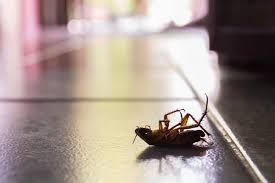Srirangapatna, a historic town nestled on an island formed by the River Kaveri in Karnataka, is not only known for its rich history and association with Tipu Sultan but also for its vibrant cultural and religious traditions. Among the many festivals and rituals celebrated in this heritage town, Kadali Vivaha in Srirangapatna stands out as a unique and spiritually significant event. This sacred ceremony, celebrated annually in the Sri Ranganathaswamy Temple, draws devotees and tourists alike for its grandeur, symbolism, and the cultural ethos it represents.
The Essence of Kadali Vivaha
Kadali Vivaha, literally translating to “the wedding of the plantain tree,” is a deeply symbolic ritual that signifies the union of divine forces. The ceremony is performed as a part of the larger religious festivities dedicated to Lord Vishnu, particularly in his manifestation as Sri Ranganatha, the presiding deity of the temple. Kadali Vivaha is a celebration of nature, divinity, and the eternal bond between the celestial entities symbolized through a marriage.
In this ritual, the kadali (plantain) tree takes on the role of a bride, adorned in traditional bridal attire. It is wedded to Lord Vishnu in a ceremony that mirrors the customs and grandeur of a typical South Indian Hindu wedding. This practice is deeply rooted in the Vedic tradition, emphasizing the interconnectedness of all living beings and the divine.
The Historical and Cultural Significance
The tradition of Kadali Vivaha is said to date back centuries, reflecting the cultural fabric of Srirangapatna, a town with a storied past. The Sri Ranganathaswamy Temple, one of the oldest and most revered temples in Karnataka, serves as the focal point for this ritual. Built during the rule of the Ganga dynasty and later expanded by the Vijayanagara rulers, the temple is an architectural marvel and a hub for spiritual activities.
Kadali Vivaha serves as a reminder of the ecological harmony that ancient Indian traditions sought to uphold. By honoring a tree as a divine entity and a bride, the ritual promotes respect for nature and highlights the essential role it plays in sustaining life. It is also a representation of the divine play of creation, preservation, and renewal, themes central to Hindu cosmology.
Preparations for the Ceremony
The preparations for Kadali Vivaha begin well in advance, involving meticulous planning and devotion. The plantain tree, chosen for the ritual, is carefully selected and nurtured to ensure its health and vitality. Temple priests, artisans, and devotees come together to prepare the decorations and offerings for the ceremony.
The plantain tree is adorned with vibrant silk sarees, jewelry, and flowers, transforming it into a symbolic bride. A sacred thread (mangalasutra), an essential element of Hindu weddings, is also tied to the tree. The temple premises are decorated with intricate rangoli patterns, flowers, and lights, creating an atmosphere of festivity and reverence.
The Rituals of Kadali Vivaha
The Kadali Vivaha ceremony follows a series of elaborate rituals performed by the temple priests in accordance with ancient Vedic practices. The event typically begins with a Ganapati Puja, seeking the blessings of Lord Ganesha to remove obstacles and ensure the smooth conduct of the ceremony.
The main wedding rituals include:
- Kanyadaanam (Giving Away the Bride): In this symbolic act, the plantain tree is offered to Lord Vishnu by the priests on behalf of all devotees. This represents the selfless act of giving, a cornerstone of Hindu weddings.
- Mangalyadharana (Tying the Sacred Thread): The mangalasutra is ceremoniously tied to the tree, signifying the sacred bond of marriage. Devotees believe this act sanctifies the union and invokes divine blessings for prosperity and harmony.
- Sapta Padi (Seven Steps): Similar to a traditional wedding, the rituals include the symbolic act of taking seven steps together, representing mutual understanding, support, and commitment.
- Aarti and Prasadam: The ceremony concludes with an aarti, a ritual of worship with light, followed by the distribution of prasadam (sanctified offerings) to the devotees.
Throughout the ceremony, devotional music, chants, and hymns fill the air, creating a spiritually uplifting experience.
The Spiritual Message of Kadali Vivaha
Kadali Vivaha transcends its ritualistic aspects to deliver a profound spiritual message. It reinforces the idea of divinity in all forms of life and the need for humans to live in harmony with nature. The ritual serves as a reminder of the symbiotic relationship between humanity and the environment, urging individuals to adopt sustainable and respectful practices.
In addition, Kadali Vivaha emphasizes the values of love, commitment, and unity. By celebrating the marriage of a tree with a deity, it highlights the interconnectedness of all creation and the role of divine grace in maintaining balance in the universe.
The Role of Devotees and Community
One of the most remarkable aspects of Kadali Vivaha is the enthusiastic participation of the local community and devotees from far and wide. The event brings together people of all ages, fostering a sense of unity and collective devotion. The temple premises become a hub of activity, with cultural performances, traditional music, and vibrant processions adding to the festive spirit.
The involvement of the community also extends to social causes. Many devotees take this occasion to pledge donations and undertake charitable activities, reflecting the spirit of giving that is central to the ritual.
Kadali Vivaha in Modern Times
In recent years, Kadali Vivaha has gained prominence beyond Srirangapatna, attracting tourists and spiritual seekers interested in experiencing the unique cultural heritage of the region. Efforts by the temple authorities and local government to preserve and promote this tradition have helped maintain its authenticity and relevance.
The festival also serves as a platform to raise awareness about environmental conservation. By showcasing the sacredness of a tree in religious practices, Kadali Vivaha inspires individuals to adopt eco-friendly practices and respect the natural world.
Conclusion
Kadali Vivaha in Srirangapatna is much more than a religious ritual; it is a celebration of life, nature, and spirituality. Rooted in ancient traditions, the ceremony carries a timeless message of unity, harmony, and reverence for all creation. As devotees gather to witness this divine wedding, they not only partake in a cultural spectacle but also imbibe values that nurture their connection with the divine and the environment.
In a world grappling with environmental challenges and a need for spiritual grounding, rituals like Kadali Vivaha hold immense significance. They serve as a beacon of hope, reminding humanity of the eternal truths that bind us to each other and to the cosmos. By embracing and preserving such traditions, we honor the past, enrich the present, and inspire the future.
Also Read
- ► Use CUET Previous Year Question Paper for Preparation
- ► How to Choose the Best Label Printing Software for Your Business Needs
- ► Top Hospital Management Trends Shaping Healthcare in 2024
- ► Mebendazole for Worms: How It Works and Why It’s Effective
- ► ISO Certification is the Key for Global Quality Standards
- ► International Travel Made Simple with the Right Passport
- ► The Rise of Tracksuits in High-Fashion
- ► Web Agency Dubai: Revolutionizing Web Design in Dubai
- ► Streamline Your Business with Udyam Registration
- ► Securing Your Social Presence: Understanding Instagram Privacy Settings
- ► Web Agency Dubai: Revolutionizing Web Design in Dubai
- ► Udyam Registration – Your Gateway to Government Benefits and Schemes
- ► Honey Stick Packaging: The Sweet Solution to Convenience
- ► Experience Smooth Relocation with Trusted Packers and Movers In Karachi
- ► Wholesale Shopping Manchester: A Hub for Trendy and Affordable Fashion





